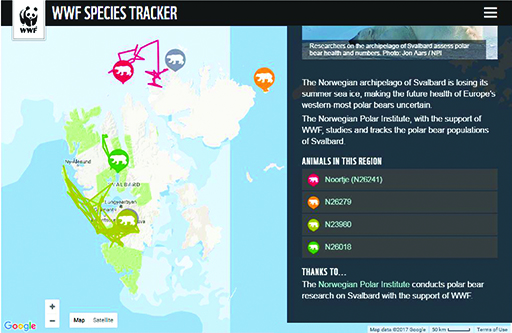1 An environmental icon
The polar bear has become an international climate change icon. But how much is known about this bear, its habitat and its life? By way of introduction, you will start with the name of this bear. To a British person it is the polar bear, to a German it is an Eisbär (ice bear), and to a French person it is an ours blanc (white bear). In these three examples the bear is referred to as polar, white, or ice – eminently sensible. However, the Latin name for this bear is Ursus maritimus, which means ‘bear of the sea’. The reason for this is given by the writer Barry Lopez:
The polar bear is a creature of arctic edges: he hunts the ice margins, the surface of the water, and the continental shore. ... He dives to the ocean floor for mussels and kelp, and soundlessly breaks the water’s glassy surface on his return to study a sleeping seal. Twenty miles from shore he treads water amid schooling fish. In winter, while the grizzly hibernates, the polar bear is out on the sea ice, hunting. In summer his tracks turn up a hundred miles inland, where he has feasted on crowberries and blueberries.
Figure 1 shows the movements of several satellite-tracked females around Svalbard, which is a group of islands about halfway between mainland Norway and the North Pole. A polar bear typically travels several thousand kilometres per year in search of its main prey species – the seal. The state of the seas and ice of the region will therefore directly affect the bears
It turns, however, that polar bears are also impacted by effects from much further afield as you will look at next.

